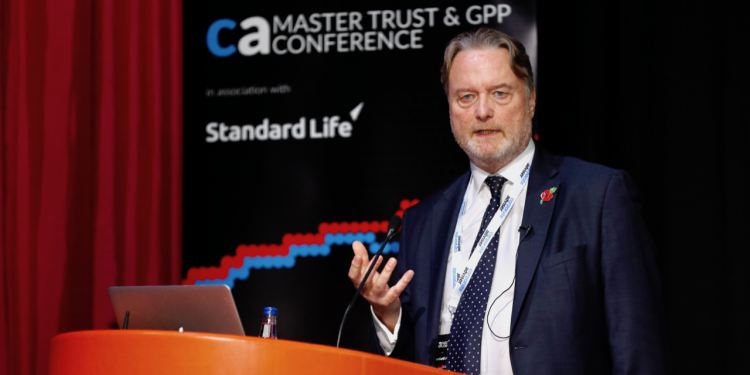Performance fees — and higher fees generally — are not the main hurdle when it comes to including illiquid investments with DC portfolios, according to Nick Groom, head of UK DC strategy & sales, institutional business Natixis Investment Managers.
Speaking at the the Corporate Adviser Master Trust and GPP conference he pointed out that anyone who has been involved in a tender for NEST will know that perceived hurdles around fees and daily pricing can be overcome.
He points out that NEST have included illiquid assets within their asset management risk and have done so on an “evergreen” open structure within the charge cap, and without resorting to performance fees.
Groom pointed out that there is now a government consultation on reforming the 0.75 per cent charge cap on DC default funds. He says that moves to keep the cap but included a different performance fee may steer behaviour within the industry into unwelcome areas. He adds: “Competitive pressures mean that the fee cap is not really an issue at present with many schemes charging fees well below this level.”
However he said that the inclusion of illiquid assets will “no doubt push prices upwards.”
“One of the challenges in a low fee environment is how this is communicated and explained to members.” He added that the value for money initiatives being spearheaded by government and regulators may address some of these issues.
Groom says that government moves to make way for a Long Term Asset Funds (LTAF) a permitted investment vehicle would certainly help with the take up of illiquids with DC schemes. But he points out “this is not the magic bullet” that many think it might be.
Groom says that aligning the inclusion of illiquids with the climate agenda could be a real driver of change. As he pointed out renewable energy infrastructure offers the opportunity to deliver higher returns and lower volatility for investors.
He says: “There will be challenges and pot holes along the way but it is clear there is a drive towards less liquid assets.” However he cautioned against thinking of this as one asset class, pointing out the umbrella term includes a range of different types of assets, each of which had their own risk, return and liquidity profile.
He added that consolidation in the DC market is also likely to ultimately lead to more investment in illiquids but he says it may be five to seven years before this starts to make a real difference to the overall market.





